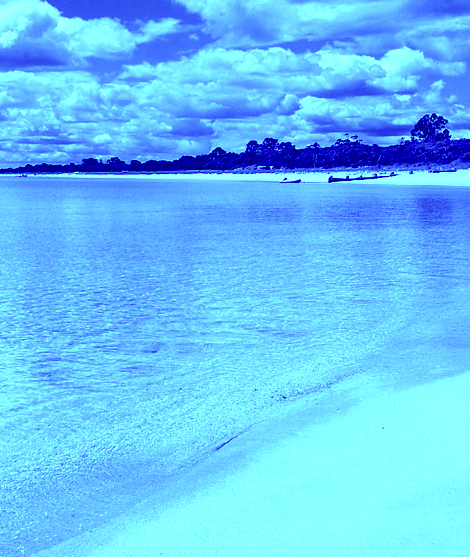Coastal sinks assessed
 Experts say coastal ecosystems are a net greenhouse gas sink.
Experts say coastal ecosystems are a net greenhouse gas sink.
A new greenhouse gas budget shows coastal ecosystems globally are a net greenhouse gas sink for carbon dioxide (CO2) but emissions of methane (CH4) and nitrous oxide (N2O) counteract some of the CO2 uptake, according to international researchers led by Australia’s Southern Cross University.
The new findings of the coastal greenhouse gas balance (CO2 + CH4 + N2O) in ten world regions and globally are outlined in a new paper, Coastal vegetation and estuaries collectively are a greenhouse gas sink.
From tropical lagoons to polar fjords, from coastal mangrove forests to underwater seagrass communities, many coastlines around the world show high diversity in greenhouse gas sinks and emissions.
“Understanding how and where greenhouse gases are released and absorbed in coastal ecosystems is an important first step for implementing effective climate mitigation strategies,” said lead researcher, Dr Judith Rosentreter, Senior Research Fellow at Southern Cross University.
“For example, protecting and restoring mangrove and salt marsh habitats is a promising strategy to strengthen the CO2 uptake by these coastal wetlands.”
Other activities to curb human impact, like reducing nutrients, organic matter, and wastewater inputs into coastal waterways, can reduce the amount of CH4 and N2O released to the atmosphere.
The global team of scientists looked at ten different world regions: North America, South America, Europe, Africa, Russia, West Asia, South Asia, East Asia, Southeast Asia and Australasia (see Figure 1).
They found the strongest coastal greenhouse gas (GHG) sink was in Southeast Asia because of its extensive and productive tropical coastal wetlands that take up CO2. A second sink hotspot is North America, with its large areas of coastal wetlands but also CO2-uptaking fjords.
“Our new research shows that fjords around the world take up ~40% of CO2 that would otherwise be released from tidal systems, deltas and lagoons. Most (86%) of this important CO2 uptake by fjords comes from the North America region, mostly Greenland,” said co-author Professor Bradley Eyre, Professor of Biogeochemistry at Southern Cross University.
Dr Rosentreter added: “Other coastal habitats are sources of greenhouse gases. For example, coastal wetlands such as mangrove forests, coastal salt marshes and seagrasses, release more than three-times more CH4 than all estuaries in the world.”
At the same time coastal wetlands, also called coastal ‘blue carbon’ wetlands, can be strong sinks of CO2 and some also take up N2O, which, on balance, makes them a net GHG sink for the atmosphere when all three greenhouse gases are considered.
“In our new study, we show that when we consider all three greenhouse gases (CO2 + CH4 + N2O), eight out of the 10 world regions are a coastal net greenhouse gas sink,” Dr Rosentreter said.
The findings will inform the efforts of the Global Carbon Project’s RECCAP2.
“The research was initiated by the Global Carbon Project to establish greenhouse gas budgets of large regions covering the entire globe, and for which the contribution of these coastal ecosystems remained unaccounted for,” said co-author Pierre Regnier, Professor of Earth System Science at Université Libre de Bruxelles.








 Print
Print